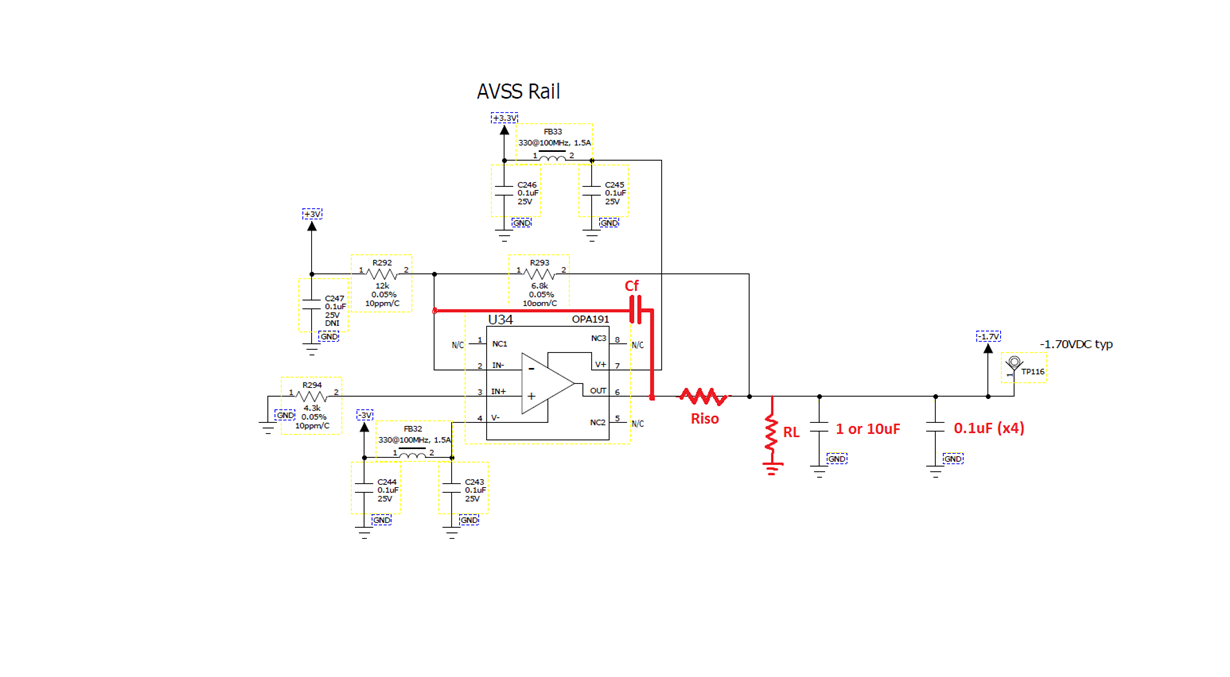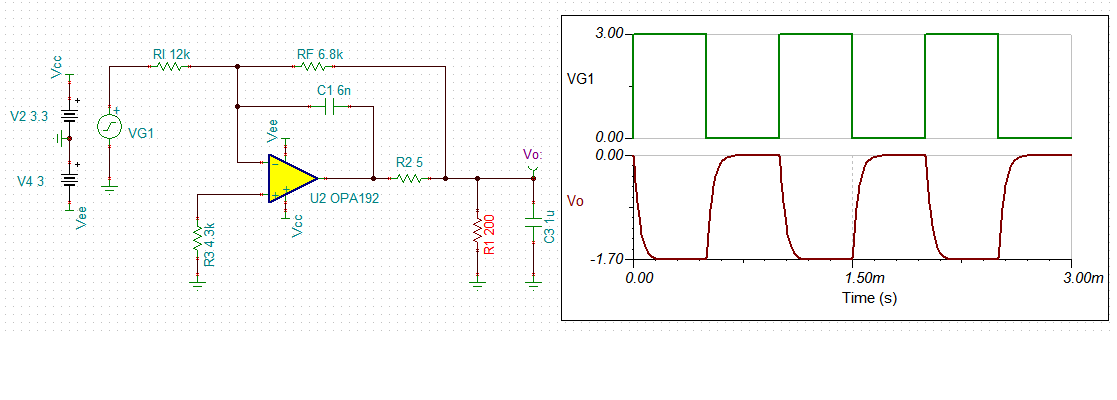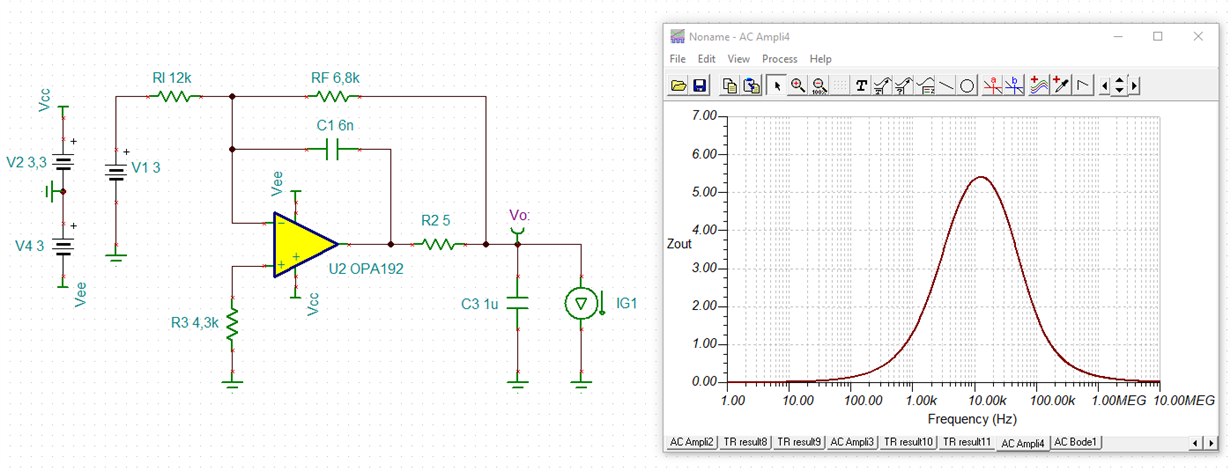Other Parts Discussed in Thread: ADS131E08, , OPA191, THS4551, ADS127L01, LM7705
This is related to a previous thread. I need to create a precision (better than 0.1%) -1.7V rail from a precision (0.04%) 3V rail. The -1.7V rail is feeding AVSS and VREFN for two TI ADCs, part # ADS131E08. The current draw for the two ADCs is 11.6mA typical (probably 16-20mA max). I would like to be able to provide capacitive decoupling (ideally 1uF or 10uF in parallel with 4-6 0.1uF caps) on the -1.7V rail to prevent noise.
My thought is to use an OPA192 in an inverting opamp configuration with In-Loop Compensation using precision resistors. I need help verifying component values (Cf, Riso, RL), max load capacitance allowed/required, and circuit performance. See my initial schematic below.





